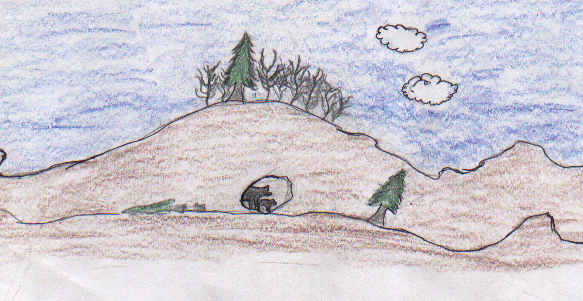 This collection of student work is from Frank Keim's classes. He wants to share these works for others to use as an example of culturally-based curriculum and documentation. These documents have been OCR-scanned and are available for educational use only.
This collection of student work is from Frank Keim's classes. He wants to share these works for others to use as an example of culturally-based curriculum and documentation. These documents have been OCR-scanned and are available for educational use only.Special | A | B | C | D | E | F | G | H | I | J | K | L | M | N | O
P | Q | R | S | T | U | V | W | X | Y | Z | ALL
American Black Bear by Robert Pitka:The Black bear is the most widespread and numerous bear in North America. The Black bear spreads from the Sierra Madre in Northern Mexico to Arctic Canada and Alaska. The population of the Black bear is between 400,000 and 750,000. The Black bear can be cinnamon, beige, white, and blue in color. Though many call it a four-legged "garbage grinder," it may feed on berries, carcasses, dead fish, ants and other insects, acorns, beech nuts, wild cherries, honey, grass and herbs--anything edible. They even kill baby moose. Some cabins, camps, food caches, garbage cans and town dumps are often raided for food. Black bears are the smallest bears in North America. The males are a third bigger than the females. A female will share her range with another female offspring, who will take over the range if the mother dies. Black bears usually mate around May and June. A female usually has only two cubs but might have up to four cubs. When they are born they weigh between 8.4 to 11.4 ounces. When they are about five weeks old they start walking. They follow their mother after they leave the den in Spring. Two years later they are on their own. By Robert Pitka
| |
|




